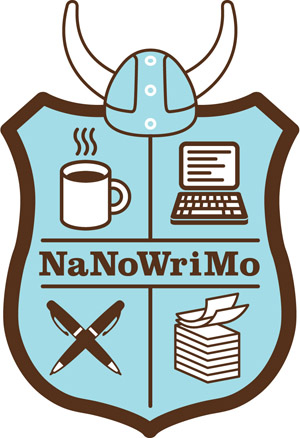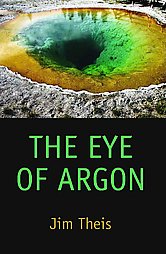 What a book to assign to high school students! The plot plods, the characters wallow, the ending claims to be happy but is, in most readers’ experience, a huge downer. The book manifests many forms of excellence, too, but it’s simply the wrong book for high school, and it’s part of a canon of eat-your-brussels-sprouts literature that notoriously turns boys off from reading in general.
What a book to assign to high school students! The plot plods, the characters wallow, the ending claims to be happy but is, in most readers’ experience, a huge downer. The book manifests many forms of excellence, too, but it’s simply the wrong book for high school, and it’s part of a canon of eat-your-brussels-sprouts literature that notoriously turns boys off from reading in general.
Fortunately, I have discovered a secret reading protocol that takes some of the sting out of Hawthorne.
American teenagers will probably be stuck with The Scarlet Letter for many generations to come, for several reasons. One good reason: It offers insights into both the Puritan world of its characters and the mid-nineteenth-century world of its author–it’s a sort of curricular three-for-one bargain. Another good reason: Nathaniel Hawthorne was an immensely important author, with an influence that galvanized both contemporaries like Poe and Melville and generations of authors since. (It bears noting that a small minority of readers actually like The Scarlet Letter. Maybe some of them will come visit our comment thread and offer other perspectives. That would be cool.) However, not all the biggest reasons are so, well, reasonable.
Crappy Reason 1: Everybody who trains for certification to teach high school English is required to write lesson plans for The Scarlet Letter, so they’ll have a unit to run with, no matter where in the country they get a job. This means when you study The Scarlet Letter, even if your teacher is a veteran by then, you may be getting a unit s/he wrote as a college sophomore. The chicken-and-egg flipside of this phenomenon is that, because almost any certified English teacher has already been required to prepare a lesson plan for The Scarlet Letter, school districts regard it as safer to put on required reading lists than other classics that would require more fresh preparation on the part of their already overworked faculty.
Crappy Reason 2: If your poor English teacher had to suffer through The Scarlet Letter when s/he was in high school, and then again in college literature classes, and then a third time in education classes, that book may come to seem as inevitable as death and taxes. Cognitive dissonance may set in, too: I was made to suffer my way through preparing to teach this book, therefore the book must be appropriate and worthwhile to teach.
But you came here for my secret reading protocol, my survival plan, so let’s get on with that.
Read The Scarlet Letter as a failed fantasy novel.
…
Read More Read More
 “Why do we have to read so much?” said the students who thought Intro to Myth would be an easy A. “And all this writing! You turned it into work!”
“Why do we have to read so much?” said the students who thought Intro to Myth would be an easy A. “And all this writing! You turned it into work!” For a week, I experienced the delightful illusion that I held the whole tradition of myth and mythic literature in my head at once. Gilgamesh to Gaiman, it floated in a perfect structure of interconnectedness. I could see through time. Then I wrote the final exam, and the illusion dissolved instantly.
For a week, I experienced the delightful illusion that I held the whole tradition of myth and mythic literature in my head at once. Gilgamesh to Gaiman, it floated in a perfect structure of interconnectedness. I could see through time. Then I wrote the final exam, and the illusion dissolved instantly. One of their moves was to offer a knock-off version of the one undergraduate class Comp Lit could always get full enrollment for–the course that made it possible for my Comp Lit grad student friends to pay their rent and eat. That’s not hyperbole. I had classmates who lived in their cars during the summer because without their school-year teaching paychecks they had to choose between food and shelter.
One of their moves was to offer a knock-off version of the one undergraduate class Comp Lit could always get full enrollment for–the course that made it possible for my Comp Lit grad student friends to pay their rent and eat. That’s not hyperbole. I had classmates who lived in their cars during the summer because without their school-year teaching paychecks they had to choose between food and shelter.
 The cheap shots are kind of tempting — analogies, or allegories even, about the SAT as a form of gladiatorial combat. Some of my students do experience the test that way. Certainly the SAT has become a fasting ordeal, now that it’s four hours long and still allows only one break long enough for scarfing down an energy bar. But I’m not enlisting the aid of Katniss Everdeen to fight the College Board over its test. Odd as it sounds, there are some admirable, humane aspects to the SAT in its current incarnation. I’ve just started using the Neo-Roman culture of Suzanne Collins’s Panem setting to work to take the fear out of Latin-derived vocabulary words.
The cheap shots are kind of tempting — analogies, or allegories even, about the SAT as a form of gladiatorial combat. Some of my students do experience the test that way. Certainly the SAT has become a fasting ordeal, now that it’s four hours long and still allows only one break long enough for scarfing down an energy bar. But I’m not enlisting the aid of Katniss Everdeen to fight the College Board over its test. Odd as it sounds, there are some admirable, humane aspects to the SAT in its current incarnation. I’ve just started using the Neo-Roman culture of Suzanne Collins’s Panem setting to work to take the fear out of Latin-derived vocabulary words.


 Oaths, vows, geasa, bindings–you love reading about that kind of thing, or you wouldn’t be here at Black Gate. A vow is powerful magic. A vow written or witnessed is more powerful still.
Oaths, vows, geasa, bindings–you love reading about that kind of thing, or you wouldn’t be here at Black Gate. A vow is powerful magic. A vow written or witnessed is more powerful still.